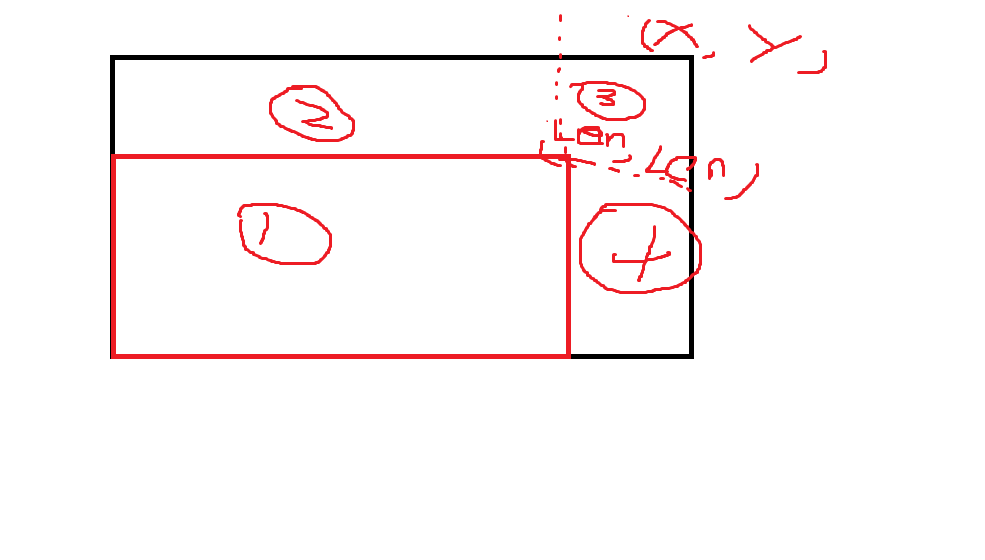给出长度为n 的A矩阵 , 按
int cursor = 0;
for (int i = 0; ; ++i) {
for (int j = 0; j <= i; ++j) {
M[j][i - j] = A[cursor];
cursor = (cursor + 1) % L;
}
}
构造出无限矩阵M , 然后给出l1 , r1 , l2, r2 ; 查询以(l1,r1)左上角 (l2,r2)右上角 的矩阵和
题意:用上面的转化规则十分容易的想到可能是有什么规律 , 所以我们打了个表出来发现 , n为奇数是相同矩阵的周期为n , n为偶数相同矩阵的周期为2*n ; 然后。。。。没有想到二维矩阵的前缀和,。。所以一直打不出来;
。。
我们先看一个图 ,如果对二维矩阵前缀和敏感这题目就是直接秒杀的事情

#include<cstdio> #include<cstring> #include<cmath> #include<algorithm> #include<iostream> using namespace std; typedef long long ll; ll a[50]; ll map[50][50]; int L; void init(){ memset(map,0,sizeof map); int cursor=0; for (int i = 0;i<L*4; ++i) { for (int j = 0; j <= i; ++j) { map[j][i-j] = a[cursor]; cursor=(cursor+1)%(L); } } for(int i=0;i<2*L;i++){ for(int j=0;j<2*L;j++){ if((i>0)&&(j>0))map[i][j]+=map[i-1][j]+map[i][j-1]-map[i-1][j-1]; if((i>0)&&(j==0))map[i][j]+=map[i-1][j]; if((i==0)&&(j>0))map[i][j]+=map[i][j-1]; } } } ll f(int x,int y){ if(x<0||y<0)return 0; ll ans=0; ll xx=x/L;//这里不用long long就会wa ll yy=y/L; ll sx=x%L; ll sy=y%L; ans+=xx*yy*map[L-1][L-1]; ans+=yy*map[sx][L-1]; ans+=xx*map[L-1][sy]; ans+=map[sx][sy]; return ans; } int main(){ int t; scanf("%d",&t); while(t--){ scanf("%d",&L); for(int i=0;i<L;i++){ scanf("%lld",&a[i]); } init(); int q; scanf("%d",&q); L=L*2; while(q--){ int x1,x2,y1,y2; scanf("%d%d%d%d",&x1,&y1,&x2,&y2); printf("%lld ",f(x2,y2)-f(x2,y1-1)-f(x1-1,y2)+f(x1-1,y1-1)); } } return 0; }